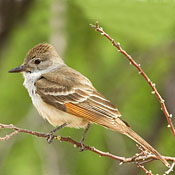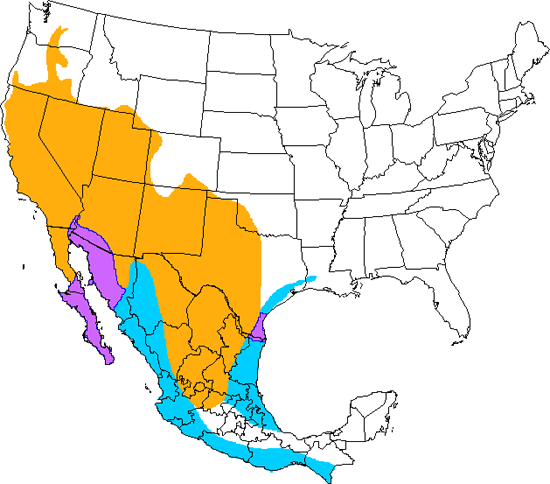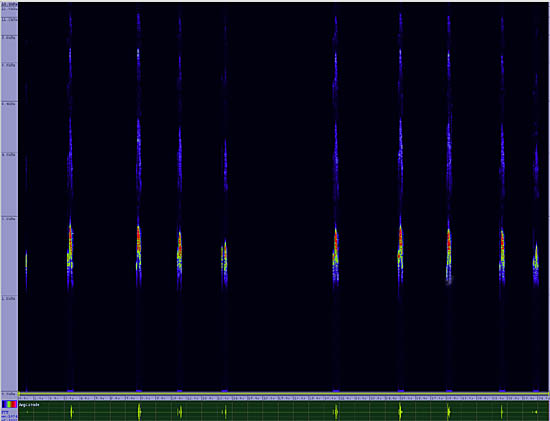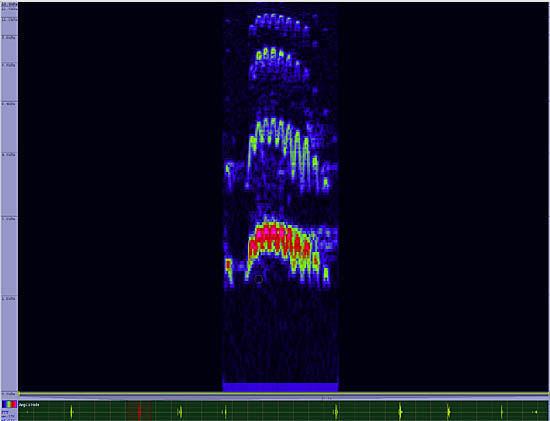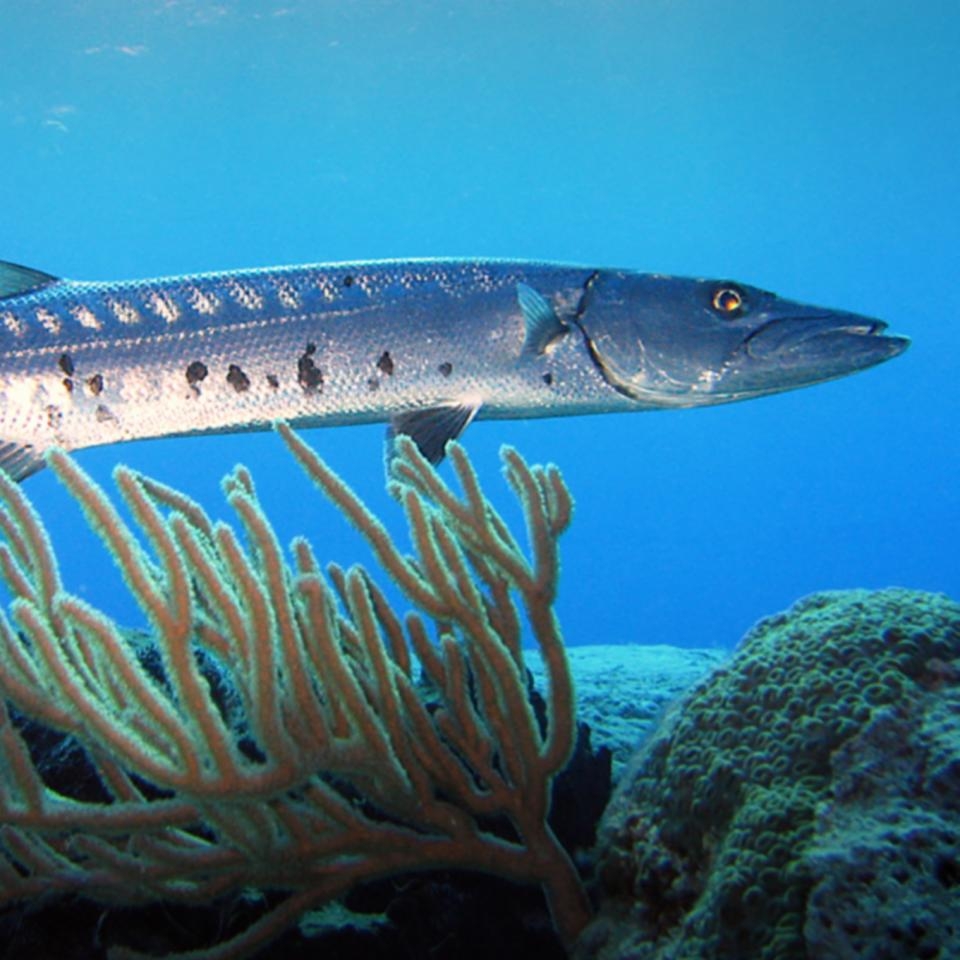
Perching
Ash-throated Flycatcher
Myiarchus cinerascens
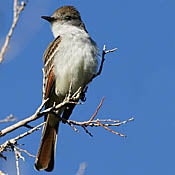
Length: 9 in. (22 cm )
Common in scrubby forests of dry areas and lower foothills, the Ash-throated Flycatcher eats insects it catches with its broad bill in mid-air. In the fall and winter, it also eats fruits. The nest is in a hole of a tree, Saguaro Cactus or fence post, and occasionally the adults add a cast snake skin to its lining of fur and feathers. It has been known to drive woodpeckers from their holes to take over a cavity.
The four-digit banding code is ATFL.
Female | Robert Shantz(link is external)
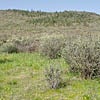
Chaparral
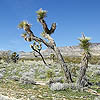
Desert
Oak-pine woodland
Savanna

Shrubs
Bird Sound Type: Buzzing
Sex of Bird: Male
Sex of Bird: Male
Sonogram Large:
There are no sonograms saved for this bird.
Sonogram Zoom:
There are no sonograms saved for this bird.
View Citation
Be Part of
Ask A Biologist
By volunteering, or simply sending us feedback on the site. Scientists, teachers, writers, illustrators, and translators are all important to the program. If you are interested in helping with the website we have a Volunteers page to get the process started.







